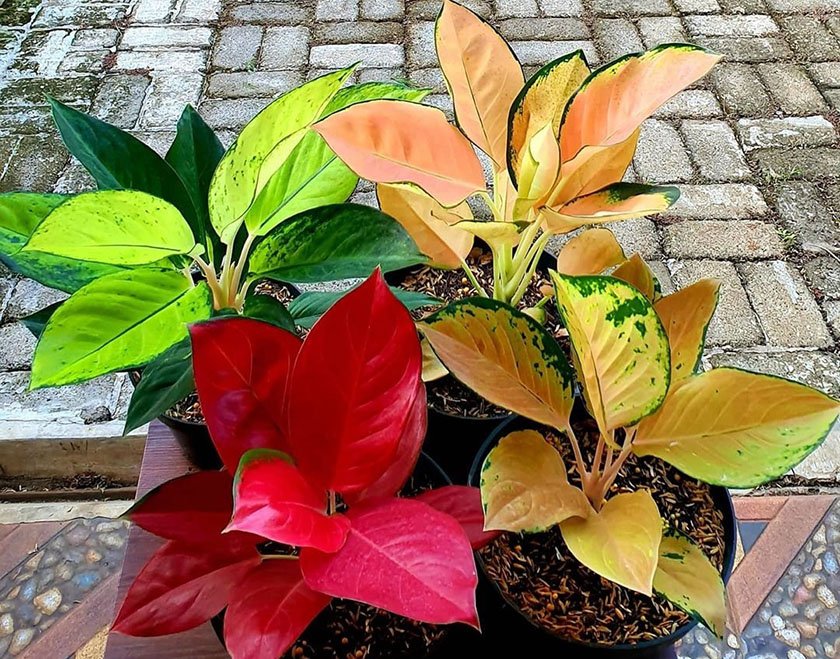Do you looking out for a plant with novel leaves, then you’re right with Aglaonema. This is often a beautiful house plant. Aglaonema are developed as ornamental plants in Asia for hundreds of years. They were conferred to the West in 1885.
Aglaonema’s name has come back from the Greek “aglos’ implies perfect and ’ema’ string. This is a Slow-growing plant to two feet tall and wide and leaves to eight inches long, four inches wide. These giant, narrow, and shiny oval leaves with short stems.
Aglaonema may well be a category of tropical aroids of twenty-one species native to south-eastern Asia from north-eastern India across southern China.
What is a Aglaonema?
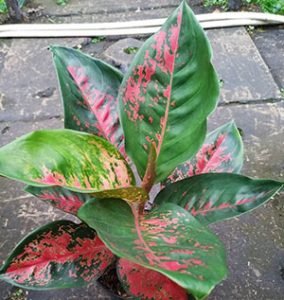
Chinese evergreen may well be a district of flowering plants of the arum family “Araceae” and a part of sub family “Aroideae”.
They’re native to tropical and subtropics locales of Asia.
Chinese evergreens may be specially famous for their leaves.
People grow this plant at home for decorative homes.
History of this aglaonema
In history, this is often an ornamental plant of Asia. They were conferred to the West in 1885 after they were to start with drop at the Illustrious biology Gardens. They need been developed, hybridized, and bred into a good cluster of cultivars.
Leaves and flowers
Leaves

They have a vast, contract, and reflexive oval leaves on brief stems, and it does not like full sun, so it is idealized for home.
Flowers
Aglaonema looks similar to Spathiphyllum and Flowers with a spadix shape and regularly is encompassed by a green.
Scientific name of Aglaonema
The Scientific name is Aglaonema nitidum ‘Silver Queen’ and It is also known as Chinese evergreens.
Tips of planting Chinese evergreens ?
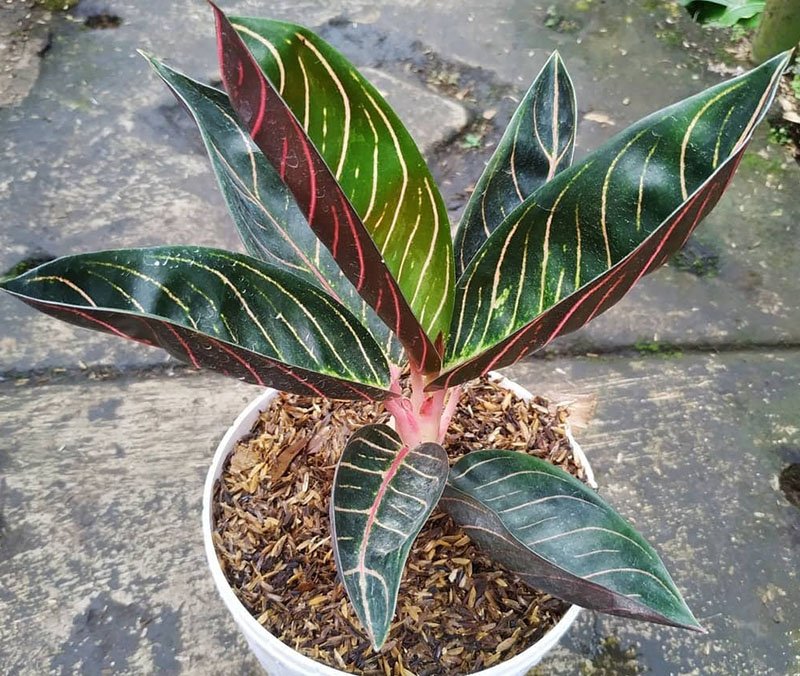
Best time to plant
Springtime is the best time to plant.
Where to grow
Select a pot at the slightest 250mm broad or more significant, depending on the measure of your plant, and you should also grow this on the soil.
Choose the right soil
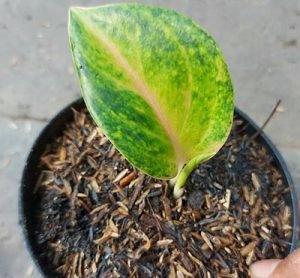 You need soil with additional perlite is prescribed, but you’ll be able moreover to consider mixing in a bark-based orchid blend.
You need soil with additional perlite is prescribed, but you’ll be able moreover to consider mixing in a bark-based orchid blend.
The soil itself ought to be sensibly nitrogen-rich but ought to be free and not densely packed.
Lightly-acidic soil in a run of 5.6-6.5 pH is prescribed for aglaonema producers.
Ideal soil makes your plant perfect to grow.
How much sun does Aglaonema need?
The green assortments of Aglaonema can develop in the close shade, whereas the assortments require brighter light and don’t uncover an assortment of Aglaonema to coordinate sun.
Where does one put Aglaonema?
By nature, Aglaonemas do best in well-lit locations like a window sill with jap light-weight exposure and bright; however, indirect daylight is perfect. Take care not to place your brand Aglaonema fully sun because the leaves can burn.
How to space Aglaonema?
Space aglaonema plants on 2- to 3-foot in the middle.
Where does Aglaonema grow?
Aglaonema grow most in Asia and New Guinea.
How much water does Aglaonema plant need?
Aglaonema inclines toward to be kept damp amid the spring and summer but makes beyond any doubt the soil isn’t wet this may cause root decay.
Within the winter, water altogether, but permit the soil to dry out between watering’s.
The way to grow Aglaonema?
Aglaonema is easy to grow at home. For growing Aglaonema, First, you choose a pot a minimum of 250mm wide or more significant, betting on the dimensions of your plant.
Position in a well-lit spot, aloof from direct daylight, and Fill with a quality potting combine, like Yates Potting combine with Dynamic Lifter.
Remove the plant from the instrumentality, gently tease the roots and cut away any circled or tangled roots. Position in pot and backfill with a potting combine, gently firming down, and water in well afterward. Water when the upper layer become dry.
Maintenance And Care ?
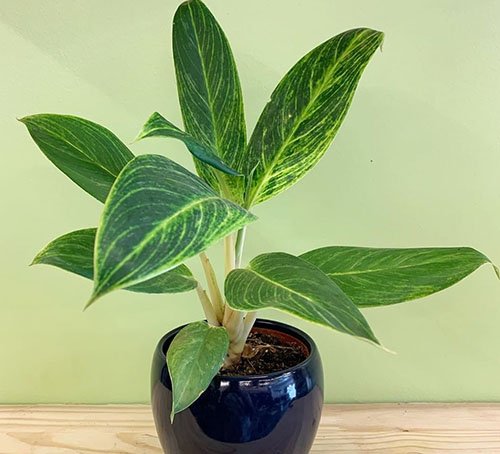
Water regularly, but not too frequently
Aglaonema prefers to dry out between watering; therefore, feel the soil along with your finger some inches right down to guarantee it isn’t dampish right below the surface.
If your plant is in a very bright location, then you’ll need to water it once the soil is dry halfway down the basis mass. If you have got a taller planter, generally, wetness will build up within the bottom of the instrumentation; therefore, keep that in mind.
If you have got your plant in fluorescent or lower lightweight conditions, it’s best to let the soil dry out thanks to the lowest of the pot before watering thoroughly. Be wary of overwatering with this plant because it will be susceptible to plant disease.
The key signs of over-watering unit yellowing or mushy stalks or leaves. If you discover this occurring, it’s best to let the soil dry out thoroughly before watering once more and follow careful watering patterns.
Propagation
Propagation from stem cuttings is that the most well-liked thanks to propagating litiopid genus, and it’s additionally the most straightforward thanks to propagating these plants; therefore, it’s suggested to beginners WHO would like to do agriculture. To propagate from cuttings, search for new shoots with the minimum of 5 leaves.
How to pruning aglaonema?
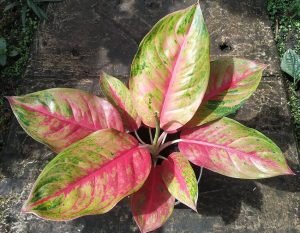
Pruning your Aglaonema is vital, although the limbs keep intact to stay the plant upright once pruning your plant, and this can be typical apply to stay from stressing the plant and improving airflow throughout the plant.
There’s not abundant pruning that must be in serious trouble the genus Aglaonema, pruning plants is mainly done to disembarrass the yellow lower leaves or spent flower. Usually, this cannot be common with the Ag; therefore, it’s not required often.
On the off likelihood if you are doing got to do some pruning for your genus Aglaonema then certify that your pruners are extraordinarily sharp and clean before pruning to stop harm.
Clean the leaves
Clean the leaves often because dusty leaves are unpreventable. Despite the colour or variation, your Chinese evergreens have sleek and enormous leaves, which will inevitably attract dirt and dirt particles.
The answer to the current could be a bit of detergent and water. Gently take a towel and chew up the leaves with the dance band of soap and water till you’ve got clean away all of the particles.
Fertilize of aglaonema
Fertilize your plant once each six weeks with Associate in Nursing organic plant food, following the package directions for dilution and administration.
Leafage Unlimited uses Associate in Nursing organic potting combine with a slow unleash plant food within the soil; thus, your plant won’t like plant food inside the primary six months of receiving it.
For best results, use a liquid plant food diluted to the suggested strength once a month throughout the spring and summer and ne’er apply plant food to dry soil, perpetually make specific the soil is damp before feeding your plant.
How to care during winter season
During winter, Keep aglaonema plants heat, however not too heat. These several plants are susceptible to cold air and reduce your watering.
Increase your home’s wetness and clean these plants and give them lots of lightweights.
Amount of sunlight
Aglaonema will tolerate low lightweight; however, the varied ones can maintain their lustre in medium to bright, indirect daylight. They must ne’er be placed in direct daylight.
Put aglaonema plant removed from hot and cold air drafts. This includes window breezes, heaters, and air-con.
Aglaonemas likes a temperature between seventy eighty-five degrees Gabriel Daniel Fahrenheit.
Dark temperatures mustn’t vary quite a ten degrees drop.
How to grow aglaonema in the water?
Choose the healthy stem that’s a minimum of 6-7 inches tall and cut just under a node. A node may be a bump on a plant stem wherever leaves emerge. Remove any lower leaves on the stem before inserting them in an exceeding jar.
Fill the jar with water, so the water reaches to hide simply the lowest of the stem. Please don’t submerge the entire stem in water, or it’ll rot. Place the cutting in an exceedingly medium-lightweight spot with no direct daylight and
Temperatures ought to be between sixty and 80°.
Change the water every 2 days to refresh the o then exchange and recent stagnant water don’t conduct gas that the plant has to grow roots.
Roots can begin to emerge every week to 2 weeks. Leave your unmoving cuttings in water in undoubtedly.
Though your cuttings have roots and square measure technically ready to be planted in soil and they’ll be healthier. A lot of vigorous as a hydrophyte.
Decorate your house or garden, or office with houseplant plants, tucking in colourful vases crammed with unmoving cuttings of this superb plant.
Shield against pests and illness

The most common area unit mealybugs, aphids, scales and mites. As a rule, the plant will suffer from them throughout propagation stages, and after the area unit is left untreated, the plant can die.
Colletotrichum and Myrothecium – These unit diseases that cause leaf spots throughout propagation.
Fusarium stem rot – This is often a soft mushy rot at the bottom of the decayed plant or a cutting, and the doable resolution is to get rid of the plants that are infected.
Pythium – This unwellness is mentioned collectively of the most typical root issues and happens beneath wet conditions or poorly drained soil.
Species (types) of Aglaonema
Here are some types of Aglaonema.
Aglaonema Maria
It additionally includes an abundant lower and compact look thus might be unnoticed, and Aglaonema Maria has broader however shorter leaves compared to a number of the others on provide. However, the shiny leaves area unit dark inexperienced splashed with tiny splashes of silvery blotches that help the plant to face out.
Aglaonema Silver Queen
With its skinny marbleized silvery-green lance formed leaves, they appeared everyplace from hospitals to looking malls, an incredible selection for underplanting once mistreated tall floor plants with few low leaves. Aglaonema Silver Queen was one of all the first hybrids that interior designers fell smitten.
Perhaps not as common as they were twenty years agene, they are still oversubscribed and since of Aglaonema’s general long nature, means that there’ll be lots of established Silver Queens still growing blithely round the world.
Red genus Aglaonema
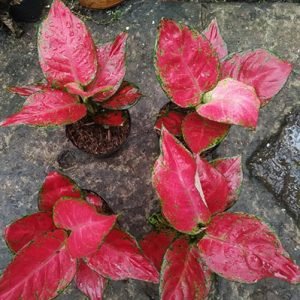 They’ll additionally deal with slightly higher lightweight intensities. The bulk of Chinese Evergreens fiddle and blend things up with totally different reminders inexperienced—however, the Red Aglaonemas usher in splashes of red and pink, creating them uncommon and pretty.
They’ll additionally deal with slightly higher lightweight intensities. The bulk of Chinese Evergreens fiddle and blend things up with totally different reminders inexperienced—however, the Red Aglaonemas usher in splashes of red and pink, creating them uncommon and pretty.
Thailand Aurora has pinky-red leaf edges that stick with it into the stems. Three of the additional standard square measure Red Ruby has dark inexperienced leaf edges with splashes of solid pink within the centre.
This genus Aglaonema is additionally refined than the previous 2 and its skinny pink leaf edges and young rhubarb coloured pink stems.
Aglaonema Diamond Bay
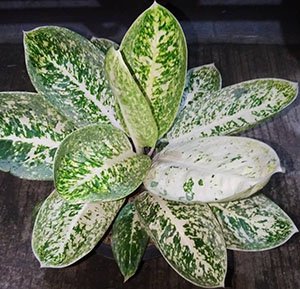 This is One of the essential growing varieties, with a sharp-looking leaf thanks to the longer and broader leaf form and select Diamond Bay if you would like a standout plant that attracts attention. They’ll be full-grown below a taller plant with associate degree exposed trunk, like a bush or Dracaena Draco or by themselves; it’s incredibly versatile.
This is One of the essential growing varieties, with a sharp-looking leaf thanks to the longer and broader leaf form and select Diamond Bay if you would like a standout plant that attracts attention. They’ll be full-grown below a taller plant with associate degree exposed trunk, like a bush or Dracaena Draco or by themselves; it’s incredibly versatile.
The leaves have a lightweight inexperienced edge, and an oversized wide centre stripe that’s greenly-creamy white, and the 2 shades meet at associate degree irregular border.
It will like additional lightweight than different varieties, thus keeping it out of dark corners to assist it in performing at its best.
Aglaonema lime
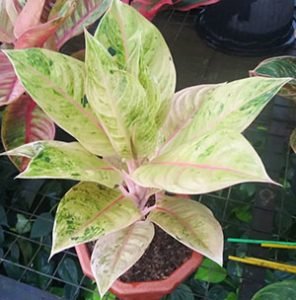
The vivid genus Aglaonema lime has because the name offers it away, colouring that gibe a lime. Many reminders inexperienced and yellow in slender bands that cowl the complete leaf being command within the air with different creamy stems.
They tend to be more durable to come back across and slightly dearer than the others. Though they might still be price a re-assessment as they are placing and grow to an oversized size. They are doubtless higher suited as a stand-alone plant to let it show itself off essentially.
Facts of this plants
- The aglaonema helps to enhance the air quality of your house areas with the flexibility to filter indoor air pollutants and toxins.
- This plant is fashionable and may be used as single specimens to brighten the home.
- Aglaonema plants are toxic because of metal salt crystals. If eaten, they irritate of the secretion membranes, and therefore the juice will cause skin irritation and painful rash.
- Aglaonemas are slow-growing, attractive and create wonderful foliage plants.
- This genus was effective at removing common family air toxins aldehyde and benzol. Aglaonema plants are toxic due to metal salt crystals.
Question associated with this plant
1. Is aglaonema plant annual or perennial?
Aglaonema is a perennial plant.
2. How big do aglaonema plants grow?
Aglaonema plant grows 2 feet tall and wide.
3. Can you grow aglaonema plant in a pot?
Yes
4. Can aglaonema grow in full sun?
No, it need shade and indirect sun-light.
5. How can I make keyword grow faster?
Aglaonema grows with a light, well-draining soil and slightly acidic potting medium.
Reference :
Also read :
Parijat Tree – The Tree From Paradise
Have some questions Or suggestions? Use our comments section on this blog! You can feel free to leave a comment or two down below, and we’ll get back to you as soon as possible!
We love reading your messages……

